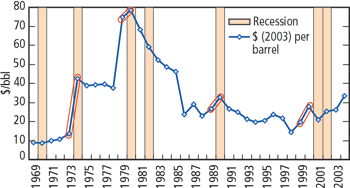Editorial Comment
Biofuel letters. I’ve received many emails and letters commenting on this column. Thank you, one and all. One theme has occurred more than any other, centered around biofuels. My feeling on these fuels is that the present systems in place in the US, Brazil and Europe do not meet many of the goals that they were intended to, especially as an environmental benefit. Using prime farmland for growing food crops for fuel is a profoundly crummy choice for land use. It’s akin to covering prime farmland in solar cells, only doing that – which would also be stupid – would at least be more environmentally sound. Using food for fuel increases agricultural runoff, silt buildup and pollution in rivers, and worsens the so-called dead zones that form offshore river deltas, such as the Mississippi. It adds CO2 to the atmosphere (except in the rare instance when it is captured and used), usually uses coal as a heat source, and it is questionable whether there is a net air pollution benefit when added to fuel. In Brazil, massive swaths of the Amazon are continually being cut down for biofuel use. And all of it made possible by huge governmental subsidies. The pro-environmental reasons pale in comparison to the negative effects. It is more about politics than anything. It does, however, ease dependency on oil imports. In Brazil, gasoline contains about 25% biofuel. The US and Europe can probably achieve and hold, say, 3 – 5% of their fuel from biological sources, depending on prices, growth in fuel demand and politics (subsidies). But all of that changes when the rapid advances in biotechnology and genetic engineering kick in. The increasing ability to convert cellulosic (woody) plant materials into biofuels could produce substantial amounts of liquid fuel in a much more environmental and economical manner. The benefits increase even more if this is combined with genetically modified plants. A letter from F. David Doty, PhD, was typical:
There are other letters centered around biofuels and biodiesel hybrids. Biodiesel, like ethanol, can be done badly or well, depending on many factors. Diesel sits at the top of the liquid-fuel energy density chart. Biodiesel, because it is a blend of plant-extracted oils and methanol, sits a little lower. When used in an electric hybrid, especially in a high-compression direct-injection engine, diesel has even greater potential than gasoline or hydrogen for high fuel efficiency. Take, for example, Toyota’s famous little four-passenger Eco-Spirit 3 diesel hybrid. Rated at 87 mpg, it was unveiled in 2001 as a concept car, and then forgotten. I should mention the obvious, which is, when cars get small and light, they always get better gas mileage. But much less attention has gone into making them crashworthy. The best example I can think of was the VW diesel rabbit, which was rated at 55 mpg. Larry Sullivan has spent most of his adult life working for both large oil companies and oilfield suppliers, between “big oil and big soy/ corn,” as he puts it. He writes:
Ooops! The chart that you see below was omitted from an article in May, Mitigating a long-term shortfall of world oil production, by Hirsch, et al. We regret the mistake, especially in the midst of an otherwise excellent article. It is interesting in its own right. The pertinent copy reads: “As seen in Fig. 6, oil price increases have preceded four out of six US recessions since 1969, and virtually every serious oil price shock was followed by a recession. Thus, while oil price spikes may not be necessary to trigger a US recession, they have proven to be sufficient over the past 30 years.”
|
|||||||||||





